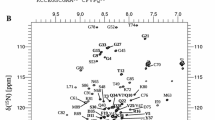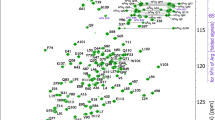Abstract
Helicoverpa species are polyphagous pests, with the larval stages causing major damage to economically valuable crops such as cotton, tomato, corn, sorghum, peas, sunflower, wheat and other pulses. Over the years, Helicoverpa armigera has developed resistance to most classes of chemical insecticides, and consequently it is now largely controlled on cotton plants via the use of Bt transgenic crops that express insecticidal Cry toxins which in-turn expedited resistance development in a number of pest species including H. armigera. In a hope to provide other eco-friendly alternatives solutions to counter the effect of the pest, people have identified a number of protease inhibitors (PIs) from the domesticated capsicum species Capsicum annuum, several of which potently inhibited H. armigera gut proteases and impeded growth of H. armigera larva. With a view to explore and enhance the specific nature or properties of these PIs on the mechanism of inhibition, structural and functional characterization of these PIs are inevitable. Towards this goal, we have carried out complete 1H, 13C and 15N resonance assignments of two of these PIs, identified as IRD7 and IRD12, using a suite of 2D and 3D multi-dimensional and multi-nuclear NMR experiments.



Similar content being viewed by others
Abbreviations
- IRD:
-
Inhibitory repeating domains
- HSQC:
-
Heteronuclear single quantum correlation
- NMR:
-
Nuclear magnetic resonance
- PI:
-
Protease inhibitors
References
Atreya HS, Chary KVR (2002) New chemical shift signatures of bound calcium in EF-hand proteins. Curr Sci 83:1240–1245
Atreya HS, Sahu SC, Chary KV, Govil G (2000) A tracked approach for automated NMR assignments in proteins (TATAPRO). J Biomol NMR 17:125–136
Barnwal RP, Chary KV (2008) An efficient method for secondary structure determination in polypeptides by NMR. Curr Sci 94:5
Barnwal RP, Rout AK, Chary KV, Atreya HS (2007) Rapid measurement of 3J(H N-H alpha) and 3J(N-H beta) coupling constants in polypeptides. J Biomol NMR 39:259–263
Barnwal RP, Rout AK, Chary KVR, Atreya HS (2008) Rapid measurement of pseudocontact shifts in paramagnetic proteins by GFT NMR spectroscopy. Open Magn Reson J 1:13
Barnwal RP, Devi KM, Agarwal G, Sharma Y, Chary KV (2011) Temperature-dependent oligomerization in M-crystallin: lead or lag toward cataract an NMR perspective. Proteins 79:569–580. https://doi.org/10.1002/prot.22905
Barnwal RP, Agarwal G, Chary KV (2012) Guanidine-HCl dependent structural unfolding of M-crystallin: fluctuating native state like topologies and intermolecular association. PLoS ONE 7:e42948 https://doi.org/10.1371/journal.pone.0042948
Bax A, Grzesiek S (1993) Methodological advances in protein Nmr. Acc Chem Res 26:131–138. https://doi.org/10.1021/Ar00028a001
Bax A, Ikura M, Kay LE, Barbato G, Spera S (1991) Multidimensional triple resonance Nmr-spectroscopy of isotopically uniformly enriched proteins—a powerful new strategy for structure determination. Ciba F Symp 161:108–135
Chary KV, Govil G (2008) NMR in biological systems: from molecules to humans. Springer, New York
Delaglio F, Grzesiek S, Vuister GW, Zhu G, Pfeifer J, Bax A (1995) NMRPipe: a multidimensional spectral processing system based on UNIX pipes. J Biomol NMR 6:277–293
Gratz NG (1999) Emerging and resurging vector-borne diseases. Annu Rev Entomol 44:51–75 doi. https://doi.org/10.1146/Annurev.Ento.44.1.51
Joshi RS, Gupta VS, Giri AP (2014) Differential antibiosis against Helicoverpa armigera exerted by distinct inhibitory repeat domains of Capsicum annuum proteinase inhibitors. Phytochemistry 101:16–22
Keller R (2004) The computer aided resonance assignment tutorial. CANTINA, Goldau
Oerke EC (2006) Crop losses to pests. J Agr Sci 144:31–43. https://doi.org/10.1017/S0021859605005708
Sattler M, Schleucher J, Griesinger C (1999) Heteronuclear multidimensional NMR experiments for the structure determination of proteins in solution employing pulsed field gradients. Prog Nucl Magn Reson Spectrosc 34:93–158 doi:https://doi.org/10.1016/S0079-6565(98)00025-9
Sharma D, Rajarathnam K (2000) 13C NMR chemical shifts can predict disulfide bond formation. J Biomol NMR 18:165–171
Spera S, Bax A (1991) Empirical correlation between protein backbone conformation and C-alpha and C-beta C-13 nuclear-magnetic-resonance chemical-shifts. J Am Chem Soc 113:5490–5492. https://doi.org/10.1021/Ja00014a071
Tamhane VA, Chougule NP, Giri AP, Dixit AR, Sainani MN, Gupta VS (2005) In vivo and in vitro effect of Capsicum annum proteinase inhibitors on Helicoverpa armigera gut proteinases. Bba-Gen Subj 1722:156–167. https://doi.org/10.1016/j.bbagen.2004.12.017
Tay WT et al (2013) A brave new world for an old world pest: Helicoverpa armigera (Lepidoptera: Noctuidae) in Brazil. PLoS ONE 8:e80134
Telang MA, Giri AP, Sainani MN, Gupta VS (2005) Characterization of two midgut proteinases of Helicoverpa armigera and their interaction with proteinase inhibitors. J Insect Physiol 51:513–522
Vranken WF et al (2005) The CCPN data model for NMR spectroscopy: development of a software pipeline. Proteins 59:687–696. https://doi.org/10.1002/prot.20449
Wishart DS et al (1995) 1H, 13C and 15N chemical shift referencing in biomolecular NMR. J Biomol NMR 6:135–140
Acknowledgements
We acknowledge financial support from the Indian Department of Science and Technology (Indo-Australian joint project DST/INT/AUS/P-63/2015 to K.V.R.C.), UGC-faculty recharge program and DST-ECR/2017/000124 to R.P.B., Australia-India Strategic Research Fund (AISRF-1277949-197), Department of Biotechnology (DBT), Council of Scientific and Industrial Research (CSIR), Tata Institute of Fundamental Research (TIFR), and the Australian National Health & Medical Research Council (Principal Research Fellowship APP1136889 to G.F.K.). We also acknowledge the Indian National Facility of High Field NMR.
Author information
Authors and Affiliations
Corresponding author
Rights and permissions
About this article
Cite this article
Gartia, J., Barnwal, R.P., Anangi, R. et al. 1H, 13C and 15N NMR assignments of two plant protease inhibitors (IRD7 and IRD12) from the plant Capsicum annuum. Biomol NMR Assign 13, 31–35 (2019). https://doi.org/10.1007/s12104-018-9846-z
Received:
Accepted:
Published:
Issue Date:
DOI: https://doi.org/10.1007/s12104-018-9846-z




